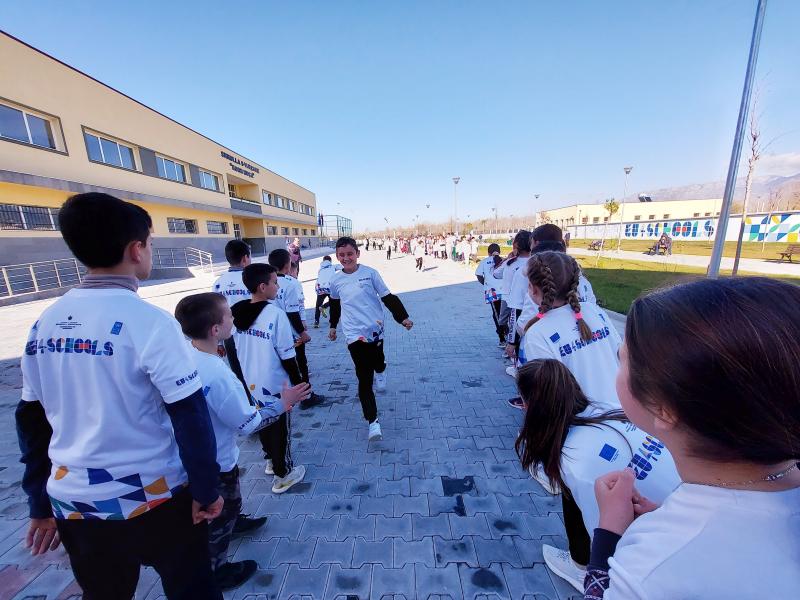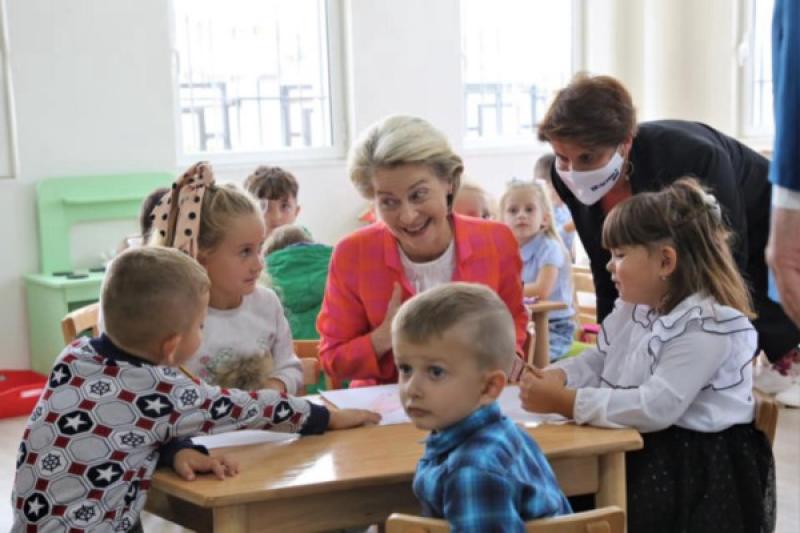

Qereke is a small village located 20 kilometers from Tirana. As you stroll through its streets, it’s difficult to imagine the chaos once felt here, which was caused by a devastating earthquake that killed loved ones, rocked homes, and closed businesses.
Today, in the small village, farmers quietly tend to their gardens and harvests.
Children in school uniforms and backpacks giggle as they walk to their schools and kindergartens. In Qereke, the kindergarten is called Europa, a reminder that Europe has permanently made its mark in this area!
Life is peaceful here. Nothing compares to the scenes witnessed on November 26, 2019.

The Nightmare
That day was one of those that sticks in your memory forever.
The inhabitants of Qereke, and all of us, woke up to the most severe natural disaster in Albania’s recent history.
A 6.4 magnitude earthquake wreaked havoc on people’s lives, toppling homes and destroying businesses. Thousands of aftershocks sparked more waves of fear and terror. They left cities paralyzed and communities hopeless.
When I traveled to the most earthquake-affected communities, I met people who were inconsolable because of the deaths of loved ones, loss of possessions, businesses, and homes.
When I visited the previous home of a family of eight, all that was left was debris that was still stubbornly lying in their old yard. All eight members of the family were in ruins. The youngest was two, and the oldest was eighty-two.
Words could not describe the pain.
As I looked around me, I could only see demolished homes, apartment buildings, and commercial spaces-a stark reminder that life had irrevocably changed for many.
Three years on, the panorama has changed, but signs of that day remain.

Bouncing Forward: An Economic Recovery Programme
The immediate Post-Disaster Needs Assessment provided a full panorama of the physical damages, economic losses, and costs of meeting recovery needs. Based on these findings, UNDP focused its long-term response and recovery support on four areas:
1) supporting the formulation and implementation of social protection service delivery;
2) supporting local economies and communities through an earthquake economic recovery and resilience programme;
3) investing in rebuilding public infrastructure, including educational facilities; and 4) strengthening the country’s disaster risk preparedness, management, and response.
Immediately after the earthquake, UNDP launched a social protection response project in the municipalities of Durres, Kruje, and Shijak-mostly affected by the earthquake.
The project funded by Sustainable Development Goals Acceleration Fund, established with donations from the governments of the United Kingdom, Finland, and Norway- helped people get back on their feet and rebuild their lives.
Building schools of the future for Albania’s young generation
The earthquake damaged the infrastructure of 321 education institutions in the affected municipalities. At the International Donors’ Conference, the EU pledged €115 million from its budget to rapidly reconstruct and rehabilitate key public buildings. This is how the #EU4Schools Programme came to life with a budget of EUR 75 million from the EU and UNDP’s own contribution of EUR 765,000 to target 63 educational facilities in the 11 earthquake affected municipalities. This was a noble act of support benefiting the country’s youngest generation.
24,500 students, children, and teachers benefit from the programme.
UNDP has combined two key principles during the reconstruction process: #BuildBackBetterand #BuildBackTogether implying stronger structures that can resist natural disasters, bearing the highest international standards of quality and safety, with renewable energy sources, being fully accessible for pupils and children with disabilities, and built together with the community to foster sustainability and ownership.
Two years since the start of the programme, 34 education institutions have been completed, enabling 10,087 children and academic staff to return to brand new schools which have made learning and teaching more interesting, more productive, and more fun.
To read the full article, please head over to its original publication www.undp.org